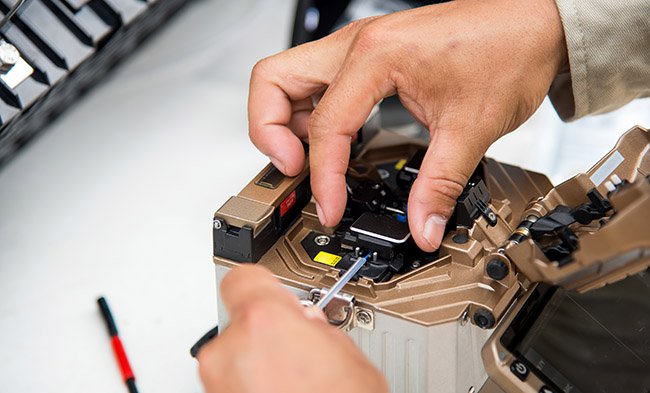Business owners who are installing fiber-optic cabling will find the following guidelines helpful when they are working with the professionals who are handling their installation. These best practices will help them succeed in the cabling projects for their facilities.
Port Mapping & Design
Cabinet placements, hardware, patch panels, port-counts, power access connection points, and trunking locations should all be included in port mapping. Design objectives involve both maximizing efficiency and eliminating errors due to awkward cable access, slack, snags, and unprotected connections in areas with heavy traffic.
Color Coding
Official standards for cable colors are set forth in ANSI/TIA-606-C (Administration Standard for Telecommunications Infrastructure). However, your team can select the colors for the cabling that will be installed in your organization’s data center. Staying consistent is the key, and the coding scheme must be selected prior to ordering cables.
Preparation for Installation
An inventory of every component received should match the bill of materials provided for the design. Verify that all the materials, tools, supplies, and accessories required for the installation are now on the installation site.
All products should be removed from boxes and containers before they are brought to the data center. The main reason is that the fibers in the cardboard packaging may become airborne while unpacking, and they can damage hardware in the data center.
Labeling Scheme
Comply with TIA-606-C standards for the label numbering scheme used for patch cords and jumpers. Labeling is done by cabinet number, rack unit, and port location. Longer trunk cables should be labeled at both ends, indicating length, origination, and destination.
Breakout & Stagger Lengths
The breakout lengths of cable are determined by the distance between the furcation point (where each cable separates from a consolidated, single sheathing) and where the connecters terminate. Staggering breakout lengths allows plugging into hardware, ports, and patch panels efficiently.
Service Loops
Created whenever extra length is added to a cable as a contingency, service loops are typically three to six feet long. They are quite useful when a trunk length is cut into an estimated length. This overage allows the installation team freedom in moving patch panels or enclosures in a cabinet. However, service loops can also lead to congestion.
Part 2 will continue discussing best practices for fiber-optic cabling installations.
Progressive Office Cabling
Founded in 1986, Progressive Office’s success has been a direct result of years of commitment to seeking cost-effective solutions. Working together, Progressive teams are committed to getting your data cabling, access control, and telecom systems installed and operating while minimizing disruption and downtime. Call our toll free number (800) 614-4560 today.

